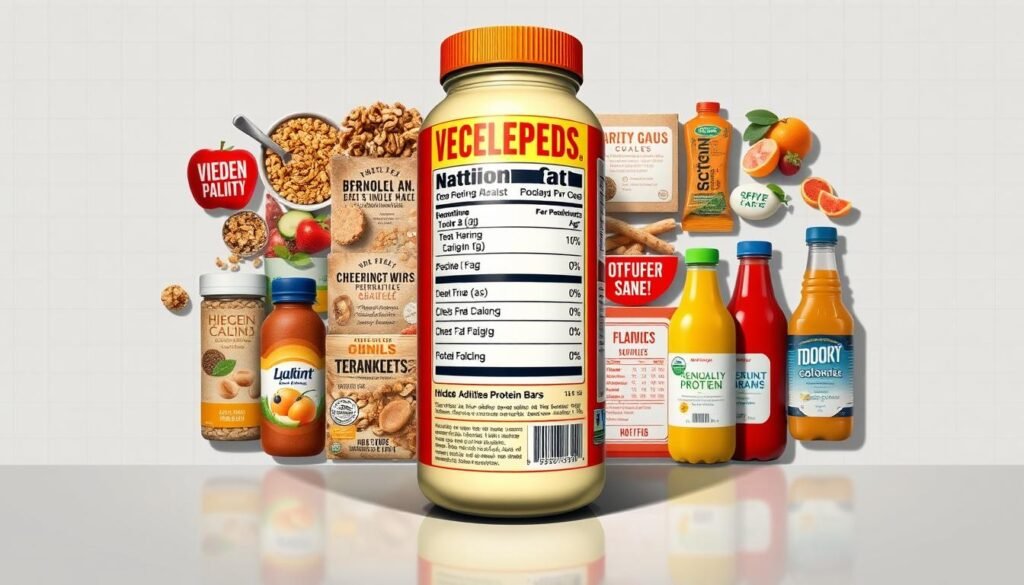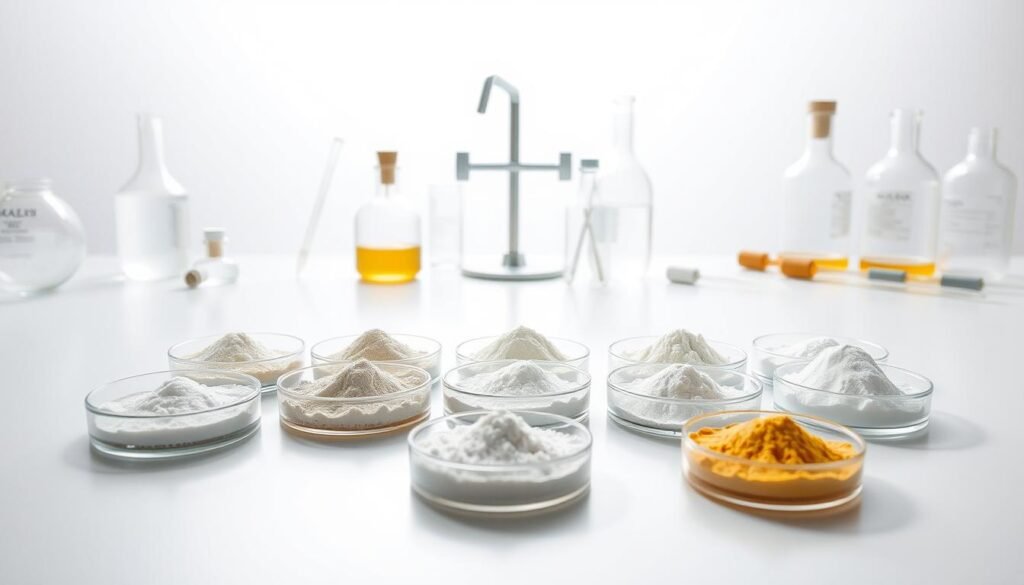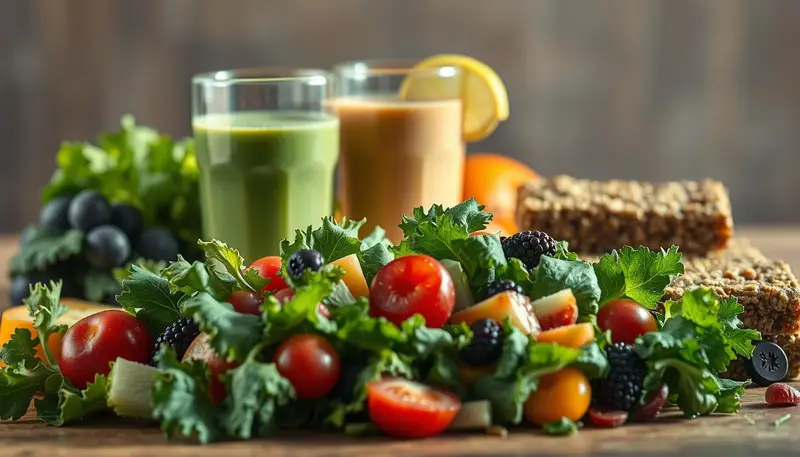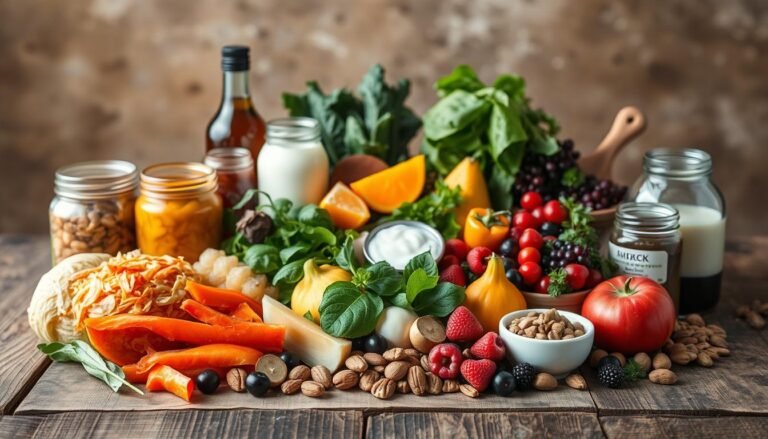Are you unknowingly eating toxic ingredients that look like “healthy” food? Millions of Americans buy packaged foods thinking they’re good for them. But, hidden ingredients might be harming their health goals.
The food industry uses tricks to make unhealthy foods seem good. What seems healthy might actually have bad ingredients. People wonder: is what we call “healthy” food really good for us?
It’s important to know which ingredients are bad for us. This guide will show you the hidden ingredients in healthy foods. These ingredients might be affecting your health without you knowing.
Key Takeaways
- Many “healthy” foods contain surprising hidden ingredients
- Marketing can mislead consumers about nutritional value
- Reading labels is crucial for making informed food choices
- Some ingredients may have long-term health implications
- Natural doesn’t always mean healthy
Understanding Food Label Deception in Modern Health Products
Exploring food labels can be tricky. Companies make their packaging look good while hiding bad stuff. It’s key to know the red flags to stay healthy and make smart choices.

Common Marketing Tactics That Mislead Consumers
Companies use smart tricks to make bad food seem good. Some common ways include:
- Using buzzwords like “natural” or “organic” without real health benefits
- Showing off a few healthy ingredients while hiding the bad ones
- Using green colors and earthy designs to look healthy
- Showing small serving sizes to make calories seem lower
The Psychology Behind Health Food Marketing
Marketing pros know we want to feel good about what we eat. They design labels to make us feel happy and healthy. This can make us ignore the unhealthy parts of snacks.
Why Reading Labels Matters for Your Health
Checking food labels helps you avoid bad ingredients. Learning to read labels well helps you choose better food. Always check the ingredient list, not just the front of the package.
“Knowledge is your best defense against misleading food marketing.”
10 Hidden Ingredients to Avoid in “Healthy” Foods

Not all foods labeled as healthy are good for you. Some labels can be misleading, hiding unhealthy ingredients. It’s important to know about these additives to make better food choices.
Are all healthy foods safe? Sadly, no. Many products hide harmful ingredients behind nice packaging and smart marketing.
- Artificial preservatives that extend shelf life
- Hidden sugars with scientific names
- Chemical flavor enhancers
- Synthetic colors and stabilizers
- Processed industrial oils
It’s hard to spot unhealthy ingredients in healthy meals. These hidden additives can ruin your diet plan without you knowing.
| Ingredient Category | Potential Health Risks | Common Sources |
|---|---|---|
| Artificial Sweeteners | Metabolic disruption | Protein bars, diet drinks |
| Hydrogenated Oils | Heart disease risk | Packaged snacks, baked goods |
| High Fructose Corn Syrup | Obesity, diabetes | Granola, fruit drinks |
Knowledge is your best defense against hidden nutritional traps. By learning to read labels and understand ingredient lists, you can keep your health safe and make better food choices.
Artificial Sweeteners: The Bitter Truth Behind Sugar Substitutes
Processed food ingredients can be tricky to spot, especially artificial sweeteners. They are often seen as healthy, but they can be harmful.

Many “diet” or “low-calorie” products use artificial sweeteners. Learning to read food labels is key to avoiding these ingredients. They can affect your health.
Most Common Artificial Sweeteners in Health Foods
- Aspartame (NutraSweet, Equal)
- Sucralose (Splenda)
- Saccharin (Sweet’N Low)
- Acesulfame potassium (Ace-K)
Health Implications of Sugar Alternatives
What makes food unhealthy can be hidden. Artificial sweeteners have been linked to health problems. These include:
- Disrupted gut microbiome
- Increased risk of metabolic syndrome
- Potential neurological impacts
- Altered insulin response
Natural vs. Artificial Sweeteners Comparison
| Characteristic | Natural Sweeteners | Artificial Sweeteners |
|---|---|---|
| Caloric Content | Contains calories | Zero calories |
| Glycemic Impact | Moderate | Minimal to none |
| Health Risks | Lower | Potentially higher |
To stay healthy, choose whole foods and natural sweeteners like stevia or monk fruit. Your body will appreciate your informed choices.
Hidden Sources of Added Sugars in Health Products
Many foods that seem healthy actually hide a lot of sugar. Companies use smart marketing to hide added sugars. This makes it hard for us to know what’s really in our food. Knowing where sugar hides can help you choose better.
Hidden sugars in food can be dangerous. Sugar has many names on labels, making it hard to see it in foods we think are good for us.
- Common sugar aliases to watch for:
- Agave nectar
- Corn syrup
- Dextrose
- Maltose
- Rice syrup
Many foods that seem healthy actually have a lot of sugar. Granola bars, smoothies, and protein drinks are examples. They are marketed as healthy but have a lot of hidden sugar.
| Product | Hidden Sugar Content | Potential Health Impact |
|---|---|---|
| Flavored Yogurt | Up to 20g per serving | Weight gain, insulin resistance |
| Fruit Juice | 25-30g per cup | Increased diabetes risk |
| Protein Bars | 15-22g per bar | Metabolic disruption |
To avoid bad ingredients, read labels carefully. Look for sugar’s many names. Check the ingredient list closely.
Hidden sugars in healthy foods can harm your health over time. Being an informed shopper helps you avoid these dangers. This way, you can make better food choices.
Preservatives Masquerading as Natural Ingredients
Looking for clean eating options? Shocking ingredients in health foods can hide behind natural-sounding labels. Many products labeled as “natural” actually contain artificial ingredients that might harm your health. It’s key to know about these hidden preservatives to make smart food choices.
Decoding Chemical Preservatives
Are your healthy foods really clean? Manufacturers often use chemical preservatives that seem natural but could be risky. Here are some common ones to watch out for:
- Sodium Benzoate
- Potassium Sorbate
- BHA (Butylated Hydroxyanisole)
- Propylene Glycol
- Calcium Disodium EDTA
Natural vs. Synthetic Preservation Techniques
Preservation methods vary. Let’s look at natural versus synthetic ways:
| Natural Methods | Synthetic Methods |
|---|---|
| Salt curing | Chemical additives |
| Vinegar | Artificial preservatives |
| Fermentation | Synthetic antioxidants |
Long-Term Health Implications
Eating foods with hidden sugars and artificial preservatives can harm your health. Research shows links to cellular damage, hormonal issues, and inflammation. Opt for foods that are minimally processed and have clear ingredient lists to avoid these risks.
Processed Oils and Hidden Trans Fats
Understanding the dangers of processed oils is key to staying healthy. Many foods labeled as healthy actually contain harmful oils. These can ruin your efforts to avoid fake healthy foods.
Processed oils hide in many nutritious-looking products, posing hidden health risks. These oils are chemically treated, losing natural nutrients and gaining harmful compounds. Eating these can harm your energy levels in the morning.
- Avoid vegetable oils like canola and soybean oil
- Choose cold-pressed, unrefined oils instead
- Look for extra virgin olive oil and coconut oil
- Check labels for hydrogenated or partially hydrogenated oils
Trans fats are a major danger in foods thought to be healthy. They can raise bad cholesterol, lower good cholesterol, and lead to heart disease. To stay energized, avoiding trans fats is essential.
Your body deserves real, unprocessed nutrition that supports genuine wellness.
To keep yourself healthy, always read food labels. Companies often hide trans fats under different names. Choose whole foods and simple cooking oils to meet your nutritional needs.
Natural Flavors: What They Really Mean
Looking for the best wellness tips for daily energy? Understanding food labels is key. Natural flavors might seem healthy, but they’re more complex than you think. These ingredients are often misunderstood by those trying to boost their energy naturally.
Natural flavors are not as simple as they sound. Food makers use them to improve taste while seeming healthy. But, in truth, natural flavors can be as processed as artificial ones.
Decoding the Flavor Mystery
Natural flavors come from a complex process. Here’s what you need to know:
- Flavor compounds are extracted from plant or animal sources
- Chemical processing transforms these original ingredients
- Multiple additives can be included in the final flavoring
- The term “natural” doesn’t guarantee nutritional value
Industry Secrets Unveiled
For daily health tips on staying active, knowing food labels is crucial. Natural flavors can have up to 100 chemicals, despite being called “natural”. These mixes aim to create tastes that keep people coming back.
“What is a good daily wellness routine? Start by understanding what you’re really consuming.”
Being an informed consumer is your best defense. Read labels well, research ingredients, and pick whole foods to boost your natural energy and wellness.
How to Identify and Avoid Harmful Food Additives
Keeping yourself healthy begins with knowing what’s in your food. Starting your day right means making smart choices about what you eat. Reading food labels can be tough, but with some tips, you can become a savvy shopper.
To stay healthy and active, follow these key tips for identifying harmful food additives:
- Learn to read ingredient lists critically
- Avoid products with long lists of unpronounceable chemicals
- Look for whole food ingredients you recognize
- Choose products with minimal processing
Natural ways to stay energized involve selecting foods with clean, simple ingredients. Pay special attention to:
- Artificial preservatives
- Synthetic colors
- Unnatural sweeteners
- Hydrogenated oils
“Your food should be medicine, and your medicine should be food.” – Hippocrates
When shopping, implement simple wellness habits for energy by following these guidelines. Check labels for hidden additives that might disrupt your health. Opt for organic, minimally processed foods that help you feel energetic from morning to night.
Pro tip: Use smartphone apps that scan food labels and provide instant ingredient analysis. These tools can help you make quick, informed decisions about the products you buy.
Remember, your body deserves the best nutrition possible. By becoming a conscious consumer, you can protect your health and maintain optimal energy levels throughout the day.
Conclusion
Understanding hidden ingredients in “healthy” foods is key to taking control of your health. It’s about learning to read food labels and spot harmful additives. This way, you can boost your energy naturally and keep your daily routine lively.
Your morning routine is crucial for your health. This article offers tips to stay energized all day. It helps you understand food marketing tricks and make better choices for your well-being.
Feeling tired can be fixed by what you eat. Every meal is a chance to give your body the nutrients it needs. By checking ingredient lists and choosing whole foods, you can boost your energy.
Your path to a healthier life is unique and strong. With the right knowledge, you can pick foods that nourish your body and support your health. Begin today and see how your health and energy levels improve.





